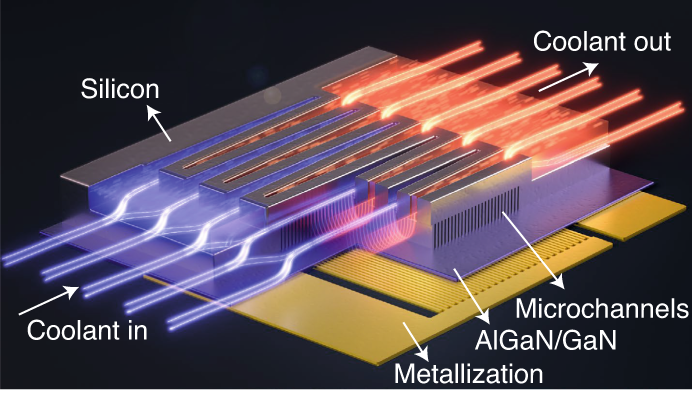Definition of Microfluidic Cooling
Microfluidic cooling is a cutting-edge technology that utilizes the principles of microfluidics to effectively dissipate heat from electronic devices and systems. This technique, which involvescirculating coolant through microscale channels, has addresses the growing thermal management challenges associated with compact and high-performance electronic devices.
Microfluidic Cooling Technology
Microfluidic cooling allows efficient heat dissipation in electronic devices. By circulating coolant through microscale channels embedded in the device, heat is absorbed and the heated coolant is then removed, thereby cooling the device.
This technology offers several advantages over traditional cooling methods:
- Enhanced Heat Transfer: The large surface area-to-volume ratio of the microscale channels facilitates more efficient heat transfer.
- Uniform Cooling: The ability to circulate coolant throughout the device ensures more consistent temperature regulation.
- High-Performance Capability: It is particularly effective for cooling devices that generate significant heat, surpassing the capabilities of conventional methods.
Design of Microfluidic Cooling Systems
Designing an effective microfluidic cooling system involves several critical factors:
- Channel Design: The size, shape, and arrangement of the channels, as well as the choice of coolant, are optimized for efficient heat transfer.
- Fluid Flow: Ensuring reliable and consistent coolant flow requires careful design of the pump and fluidic circuit.
- Integration: The cooling system must be easily integrated with the device to ensure uniform cooling without compromising device performance or reliability.

Applications of Microfluidic Cooling
Microfluidic cooling is applicable across various fields, particularly in the field of electronics. It is used to cool high-performance electronic devices, such as processors, graphics processing units (GPUs), and power electronics. These devices generate significant amounts of heat, and therefore, effective heat dissipation is critical for maintaining performance and reliability.
Microfluidic cooling is also applicable in the field of optoelectronics, which involves the use of light-emitting and light-detecting devices. Devices such as lasers and photodetectors, generate significant amounts of heat, which can be effectively dissipated using microfluidic cooling. This technology is also used in the cooling of high-power LED lights, that generate significant amounts of heat.
Microfluidic Cooling in High-Performance Computing
One of the most significant applications of microfluidic cooling is in high-performance computing. Supercomputers and data centers, which generate substantial heat, can benefit from this technology’s ability to achieve efficient and uniform heat dissipation. This has the potential to significantly enhance the performance and longevity of these computing systems by circulating a coolant through microscale channels embedded in the computers.
Challenges of Microfluidic Cooling
Despite its many advantages, microfluidic cooling poses significant challenges. A primary challenge is the precise design and fabrication of microscale channels, which are crucial for efficient heat transfer. These channels must be manufactured using advanced microfabrication techniques to ensure they are robust and reliable throughout the device’s lifespan.
Another key challenge is integrating the microfluidic cooling system with the device it is meant to cool. This integration must be carefully designed to provide efficient and uniform cooling without compromising the device’s performance. Additionally, the system must be capable of managing the high heat loads generated by high-performance devices.
Conclusion
Microfluidic cooling offers a cutting-edge solution to the thermal management challenges in modern electronics. By enhancing heat dissipation, ensuring uniform cooling, and benefiting from advances in microfabrication and ongoing research into new coolants and channel designs, this technology is well-suited for high-performance devices. As the demand for advanced electronics grows, microfluidic cooling is well-positioned to become a key solution in thermal management, driving further innovation in electronics and related technologies.
